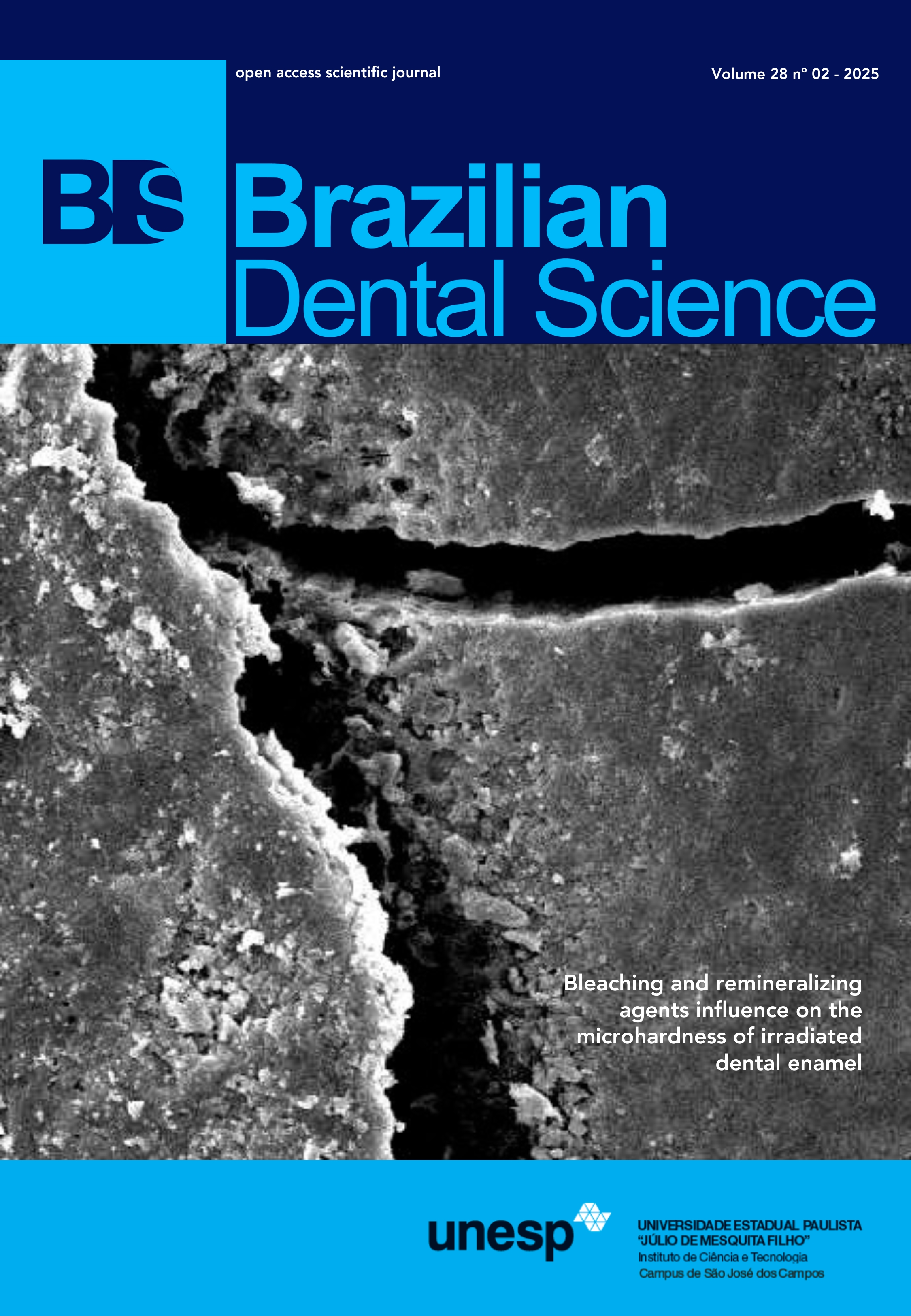Etching conditions and surface changes: a guideline for glassceramic materials
DOI:
https://doi.org/10.4322/bds.2025.e4817Abstract
Statement of Problem: In terms of ceramic restorations, the achievement of a reliable adhesion involves following specific protocols according to the ceramic material’s microstructure. Purpose: The aim of this comprehensive review is to enlighten concepts and characteristics regarding adhesion/luting procedures to glass-ceramic materials, guiding dental clinicians to ensure a long-term success of their glass-ceramic restorations. Materials and Methods: These protocols represent scientifically based treatments applied to establish micromechanical retention and chemical adhesion among the different interfaces involved in the adhesive procedure (which comprises ceramic restoration, resin cement and tooth substrate). Results: Regarding glass-ceramic restorations, the protocols carried out to produce topographical changes on the cementation surface normally improve bond ability, and consequently, lead to an increased load-bearing capacity under fatigue of the restorations. Conclusions: It is imperative to elucidate the concepts related to the distinct glass-ceramic materials available in the dental market and clarify the specifications for the correct surface treatment of each material, since each one presents different microstructure due to their singular chemical composition and arrangement.
KEYWORDS
Acid etching, Adhesive cementation, Silanization, Surface treatment, Vitreous ceramics.
Downloads
Published
How to Cite
Issue
Section
License
Brazilian Dental Science uses the Creative Commons (CC-BY 4.0) license, thus preserving the integrity of articles in an open access environment. The journal allows the author to retain publishing rights without restrictions.
=================




























